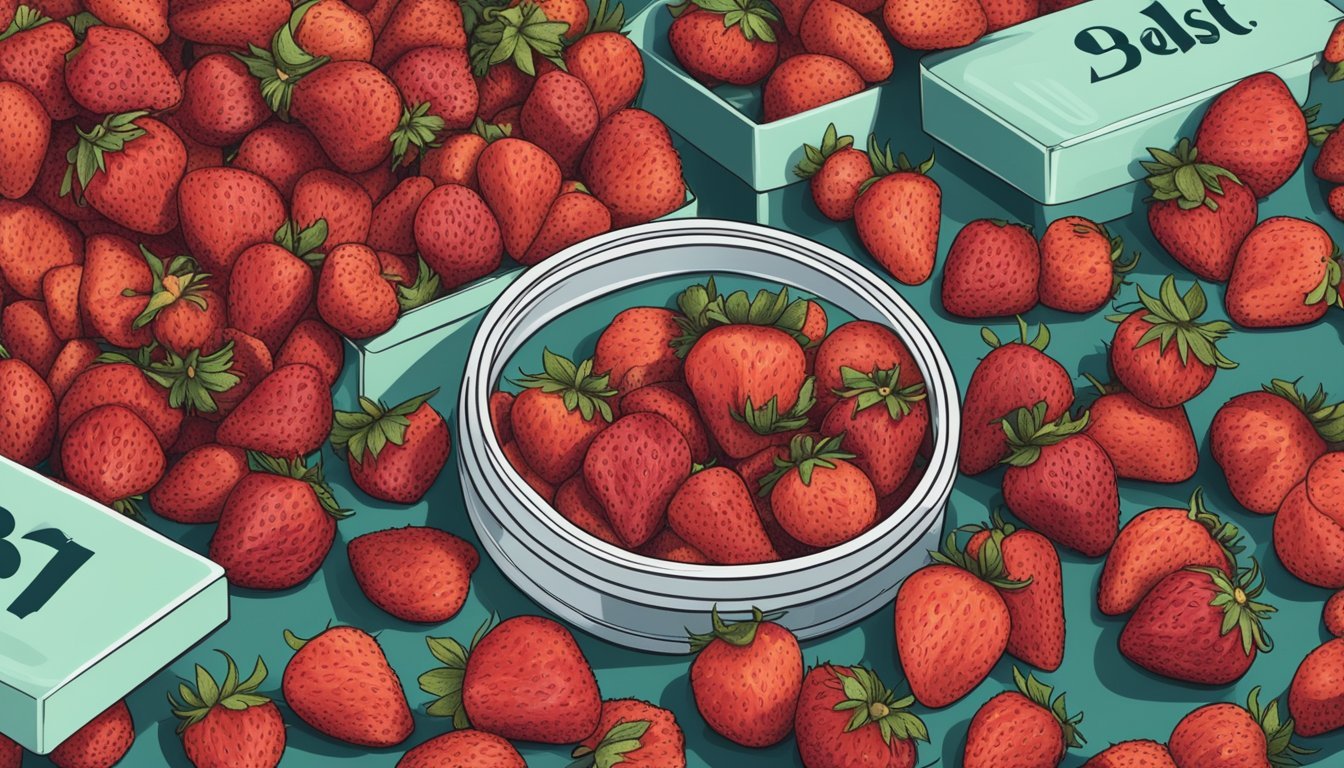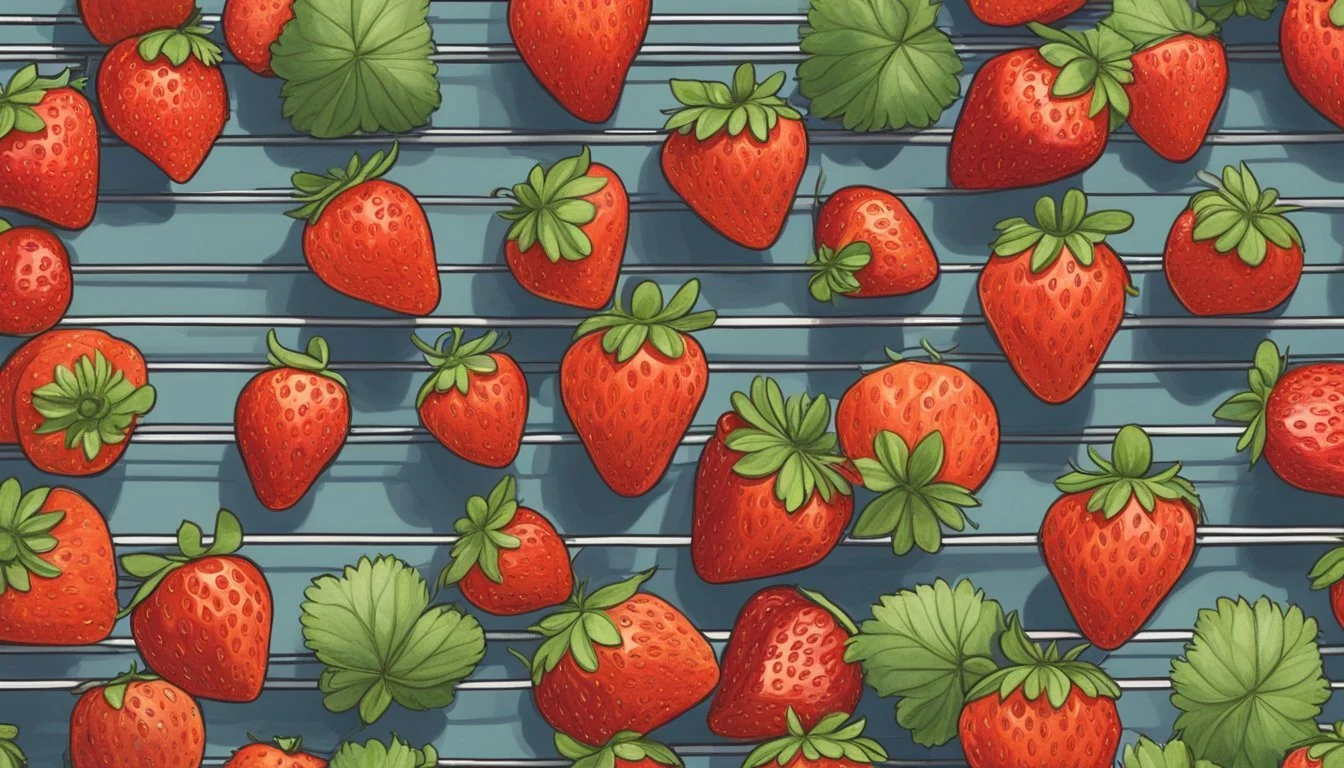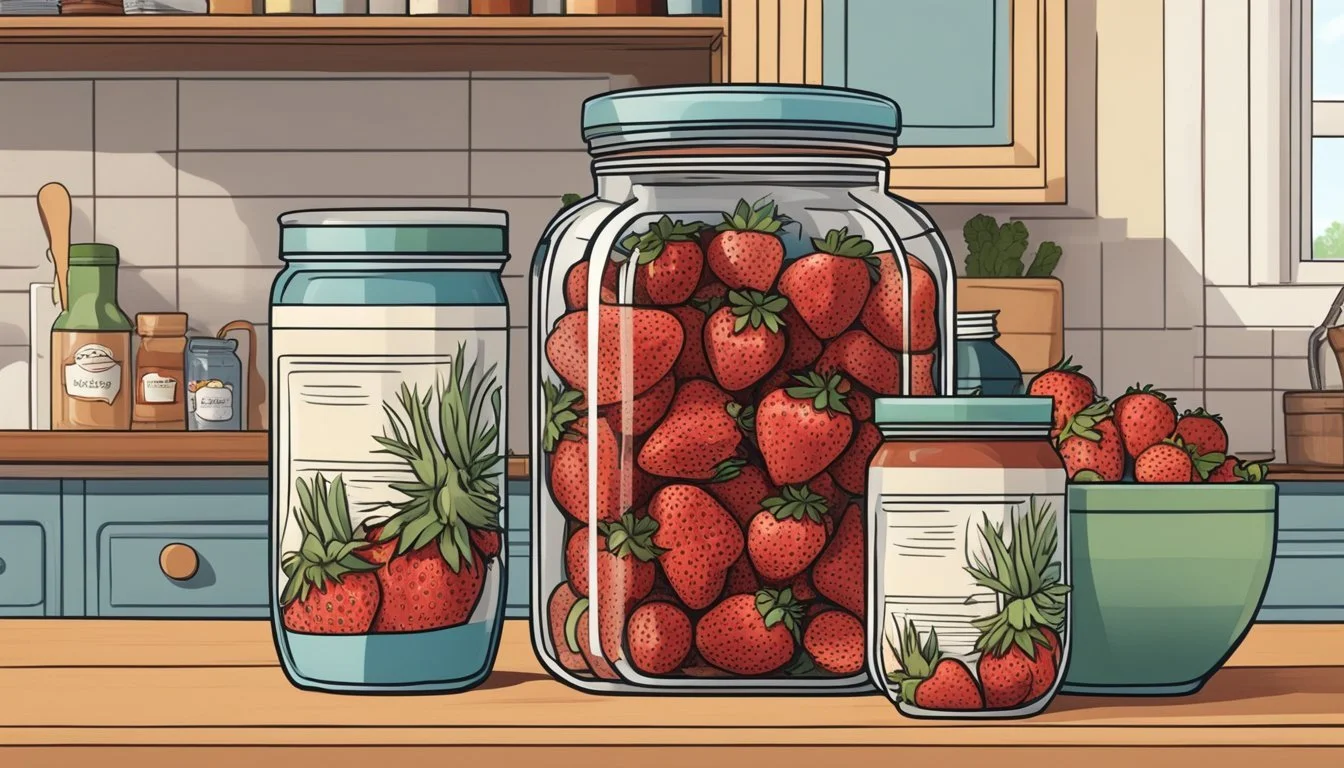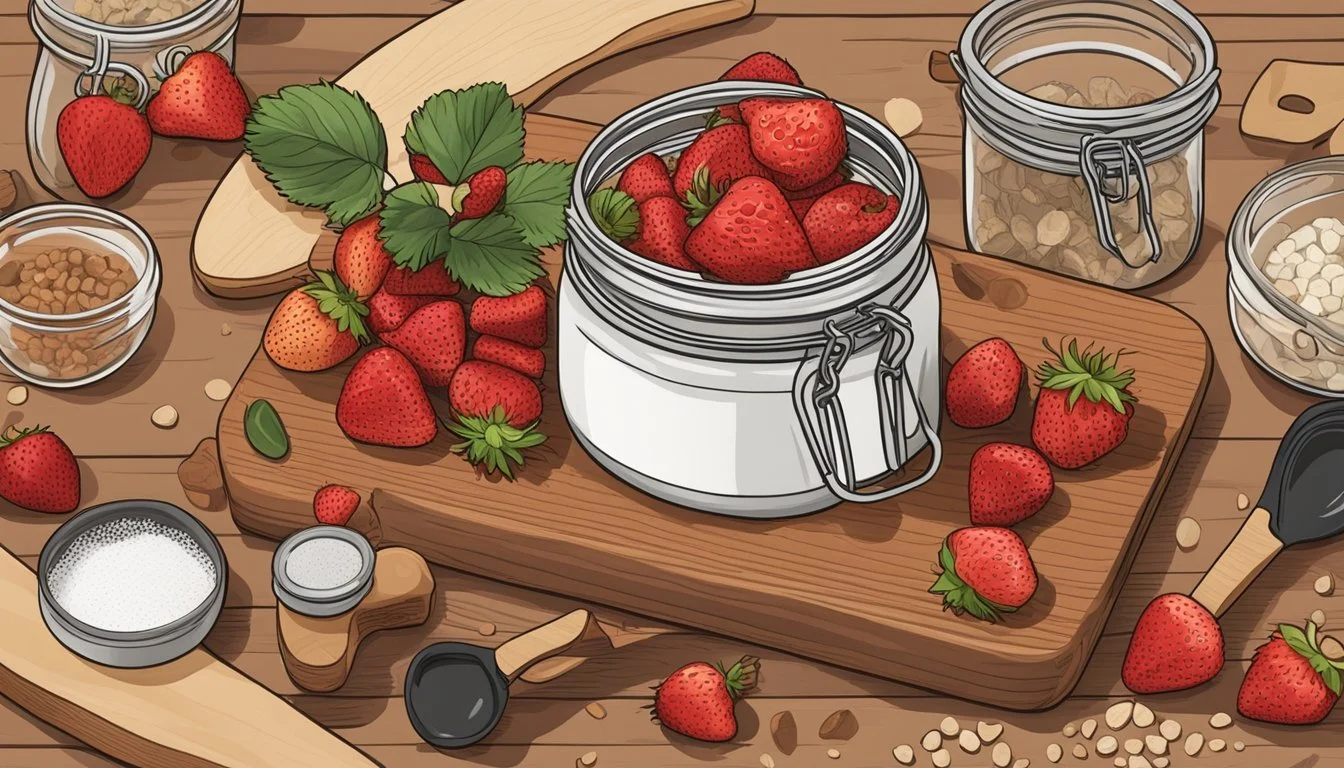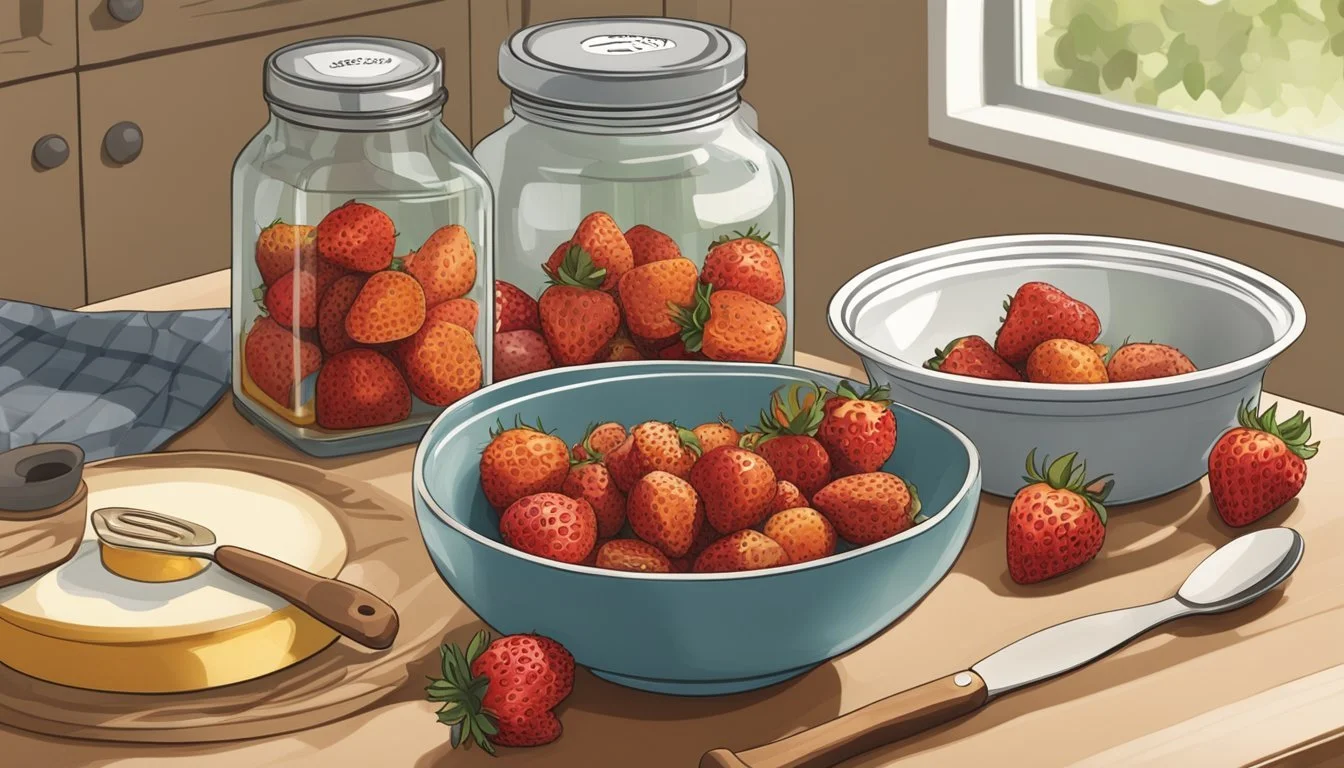How Long Do Dried Strawberries Last?
Unveiling Shelf Life Secrets
Dried strawberries (how long do dried strawberries last?) offer a popular and convenient way to enjoy the sweet taste of these berries all year round. They serve not only as a versatile snack but also contribute to a healthy diet with their retained nutrients. The longevity of dried strawberries makes them a favorite among those looking for snacks that are both tasty and have an extended shelf life compared to their fresh counterparts.
The shelf life of dried strawberries depends largely on the method of preservation and the conditions of storage. Generally, these dehydrated fruits can last from four months up to a year if properly stored. To maximize their shelf life, dried strawberries should be kept in sealed jars or airtight containers. It is recommended to place them in a cool, dry, and dark environment, such as a pantry or a cupboard, away from direct sunlight and moisture.
Consumers often choose dried strawberries for their healthy attributes, as they are a good source of fiber and antioxidants, with the added benefit of having a significantly longer lifespan than fresh fruit. The drying process concentrates the flavors and sugars, making them a potent ingredient in granola, oatmeal, and a variety of other dishes. Although their texture and moisture content change, their desirability as a convenient and nutritious option remains steadfast.
Nutritional Value of Dried Strawberries
Dried strawberries offer a concentrated source of nutrients that were present in their fresh form but with lower water content. Understanding the specific nutritional elements of dried strawberries helps in recognizing their value in a balanced diet.
Vitamins and Minerals in Dried Strawberries
Dried strawberries are a significant source of certain vitamins and minerals. They specifically retain vitamin C, though in smaller amounts compared to fresh strawberries. Essential minerals such as potassium and manganese are also present, maintaining their importance for metabolic and overall health functions.
Vitamins:
Vitamin C
Minerals:
Potassium
Manganese
Calories, Fiber, and Protein Content
A single serving of dried strawberries typically comprises about 140 calories and provides dietary fiber which is fundamental for digestive health. Although their fiber content is less dense than fresh strawberries due to the drying process, it's still present in about 3 grams per serving. Protein, while not abundant in dried strawberries, is present in minimal amounts.
Calories per serving: ~140
Fiber per serving: ~3 grams
Protein: Minimal
Comparing Nutrients to Fresh Strawberries
When compared to fresh strawberries, the nutrient profile of dried strawberries is more concentrated due to the reduction of water content during the drying process. This means that calorie for calorie, dried strawberries contain a higher amount of nutrients like carbohydrates. However, certain vitamins that are sensitive to air and heat may be reduced during the drying process.
Calories: Higher in dried strawberries
Nutrients: More concentrated in dried strawberries
Vitamins: Some reduction during drying
The Drying Process
The drying process is a meticulous method to preserve the flavor and extend the shelf life of strawberries. By dehydrating the fruit, it removes moisture which prevents spoilage and decay.
Preparing Strawberries for Drying
Before dehydrating, it is important to prepare the strawberries properly. They should be washed, and a sharp knife or strawberry huller can be used to remove the caps. For even drying, slice strawberries to a uniform thickness of approximately 1/2 inch. Consistent slices ensure that all pieces will dehydrate at the same rate.
Using a Dehydrator for Strawberries
When using a dehydrator, lay the strawberry slices in a single layer on the dehydration trays. Set the temperature to 130-140 degrees F to maintain a low temperature that won't cook the fruit. Dehydrating strawberries typically takes 8-12 hours, but this can vary based on slice thickness and dehydrator efficiency.
Oven-Drying Strawberries
For oven-drying strawberries, preheat the oven to the lowest temperature setting, ideally below 200 degrees F to mimic a dehydrator's low temperature. Place strawberry slices on a baking sheet in a single layer, ensuring they do not overlap to promote even drying. Oven-dried strawberries may take approximately 6-8 hours, but the exact time can differ depending on oven variances and whether the strawberries are desired to be chewy or crisp.
Alternative Drying Methods
While not as common as dehydrators or ovens, alternative drying methods such as an air fryer or microwave plate can also be utilized. Sun drying is an option, although it requires a consistent heat source and protective covering to prevent contamination. Air fryers can be a quick method but should be monitored closely to avoid burning. Microwaves can dry strawberry slices on a low setting using a microwave-safe plate, but this method can be less predictable in terms of evenness and texture.
Proper Storage Methods
Proper storage of dried strawberries ensures they retain quality and extend shelf life. Employing the right containers and environmental conditions can make a significant difference.
Best Containers for Storing Dried Strawberries
Airtight Containers: For optimal storage, dried strawberries should be kept in airtight containers. These containers minimize the exposure to air and prevent reabsorption of moisture, preserving the dried fruit's texture and flavor. Mason jars and vacuum-seal bags are excellent choices.
Glass Jars: A glass jar with a tight-fitting lid can also be very effective. It's important to ensure the jar is completely dry before adding the dried strawberries to avoid moisture build-up.
Ideal Environmental Conditions
Cool and Dry Places: Store the dried strawberries in a cool, dry place such as a pantry or cupboard away from direct sunlight, which can degrade their quality.
Humidity Considerations: Maintaining low humidity is crucial as high humidity can lead to mold growth. Utilizing desiccants or parchment paper in the storage container can help absorb any excess moisture.
Dark Storage: A dark place not only prevents light degradation but also keeps temperatures stable, reducing the risk of the dried fruit's quality deteriorating.
Freezing Dried Strawberries for Longevity
Freezer Storage: For extending the shelf life even further, dried strawberries can be stored in the freezer. This method is suitable, especially if the fruit won't be consumed for an extended period.
Parchment Paper: Wrap the berries in parchment paper before placing them into an airtight container or freezer bag. This helps to prevent freezer burn and clumping, making it easier to use individual portions as needed.
Shelf Life and Spoilage
When it comes to dried strawberries, their longevity and safety are dictated by various factors such as storage conditions and moisture content. Understanding these can help ensure that consumption is both enjoyable and safe.
Factors Affecting the Shelf Life of Dried Strawberries
Storage Conditions: For optimum shelf life, dried strawberries should be kept in a cool, dry, and dark place. A pantry or dark cupboard usually serves as an ideal storage location.
Moisture Content: Properly conditioned dried strawberries, with a moisture content of about 20 percent, will generally last longer as it prevents microbial growth.
Signs of Spoilage in Dried Strawberries
Discoloration: Any significant change in color might indicate spoilage.
Odor: A sour or off smell is a strong indicator that dried strawberries should not be consumed.
Texture: If the strawberries are unusually tough or have developed a sticky surface, it could suggest moisture absorption and potential spoilage.
Preventing Mold and Bacteria Growth
To reduce the risk of mold and bacteria contamination:
Airtight Containers: Store dried strawberries in airtight containers to minimize exposure to air and moisture.
Check Regularly: Inspecting the strawberries periodically can help catch early signs of spoilage.
Culinary Uses of Dried Strawberries
Dried strawberries offer a unique combination of sweetness and tang that can enhance a variety of dishes. They serve as a versatile ingredient that can be used across different meal types ranging from breakfasts to desserts.
Incorporating Dried Strawberries into Baked Goods
Baked goods greatly benefit from the robust flavor and chewy texture of dried strawberries. They can be:
Chopped and folded into muffin or cake batters.
Layered within scones or shortbread cookies for a burst of flavor.
Added to breads such as banana or pumpkin bread for a fruity twist.
A small amount can bring a distinctive taste to traditional recipes while also adding natural sweetness and color to the final product.
Dried Strawberries in Breakfast Foods
Breakfast foods become more exciting and nutritious with the inclusion of dried strawberries. They can be:
Sprinkled over cereal or yogurt for a sweet element.
Mixed with granola or oatmeal to provide texture and flavor.
Incorporated into trail mixes as a tasty, healthy snack option.
This simple addition not only enhances taste but also increases the visual appeal of parfaits and other breakfast dishes.
Creative Ways to Use Dried Strawberries
The versatility of dried strawberries allows for creative culinary applications:
Chopped strawberries can top ice cream or be stirred into salads for a touch of sweetness.
They can be ground into a powder and used in sauces or even as a natural food coloring.
Dried strawberries add a refreshing twist when blended into smoothies or used as a garnish on desserts.
Their ability to preserve well lends themselves as a convenient source of fruit flavor year-round.
Tips for Drying and Storing Strawberries
To ensure the longevity of dried strawberries, one must consider the quality of the fresh fruit, the drying process to achieve the desired texture, and proper preservation methods for long-term storage.
Selecting the Best Strawberries for Drying
The foundation of great dried strawberries is beginning with high-quality fresh fruit. Ideally, one should select ripe strawberries that are not only red and plump but also free from bruises and blemishes. The peak strawberry season offers the freshest berries, which are perfect for drying. Overripe or damaged strawberries may result in an inferior dried product.
Achieving the Optimal Texture in Dried Strawberries
To attain the best texture in dried strawberries, one should aim for a chewy yet slightly tender consistency. Using a dehydrator is the most energy-efficient method to dry strawberries uniformly. When a dehydrator is not available, drying can be achieved in an oven, set to the lowest temperature, usually around 200°F (93°C). The strawberries should be sliced evenly, no thicker than 1/4 inch, to ensure consistent drying. One must carefully monitor the drying process as overly dried strawberries can become too hard and under-dried berries may retain too much moisture and soften over time.
Long-Term Preservation Techniques
For long-term preservation, one should store the dried strawberries in a cool, dark place in airtight containers or vacuum-seal bags to protect them from humidity and light. Proper sealing is crucial to prevent them from absorbing moisture from the air, which can lead to spoilage. The National Center for Home Food Preservation recommends that properly dried and stored strawberries can last up to 12 months. Regular checks for signs of moisture and softening can help in identifying if the strawberries need to be consumed promptly or if they can continue being stored.
Health Considerations and Benefits
In examining the impact of dried strawberries on health, one can acknowledge their status as a nutritious snack that is both convenient and beneficial. They offer a range of essential vitamins and minerals, alongside dietary fiber, while considering allergies and dietary needs is crucial for safe consumption.
Dried Strawberries as a Healthy Snack Option
Dried strawberries are a compelling choice for a healthy snack due to their concentration of vital nutrients. They retain much of the nutritional value found in fresh strawberries, such as vitamin C and fiber, but in a more durable, less perishable form. They are relatively low in calories, making them a suitable option for those monitoring their caloric intake. With significant fiber content, they aid in digestion and can contribute to a feeling of fullness, which helps in managing weight.
Nutritional highlights:
Fiber: Important for digestive health
Vitamin C: Supports immune function and skin health
Protein: Essential for muscle repair and growth, though present in small amounts
Caloric Density: Low to moderate
Allergy Information and Dietary Restrictions
When considering dried strawberries, it's vital to be aware of potential allergies. Strawberries are not a common allergen, but individuals with sensitivities should proceed with caution. Additionally, they can fit into various dietary restrictions as they are naturally gluten-free and vegan. However, consumers should verify if there is cross-contamination with other allergens during processing, especially if the dried strawberries are packaged in facilities that also handle nuts, dairy, or other common allergens.
Dietary consideration:
Gluten-Free: Suitable for individuals with celiac disease or gluten sensitivity
Vegan: Free from animal products
Cross-Contamination: Check packaging for potential allergens
As a snack, dried strawberries are not only convenient and tasty but also imbued with healthful properties that make them a smart addition to one's diet.

